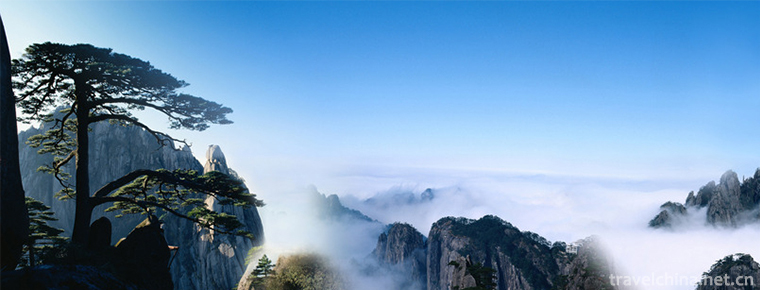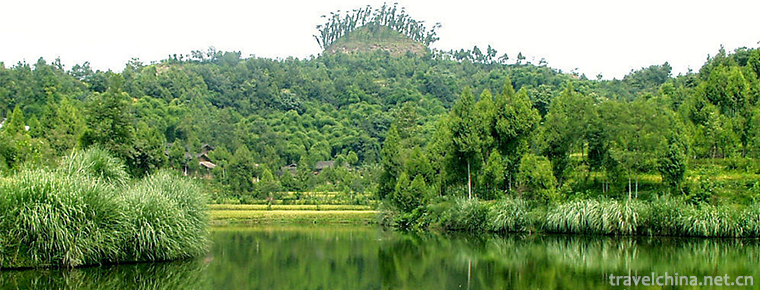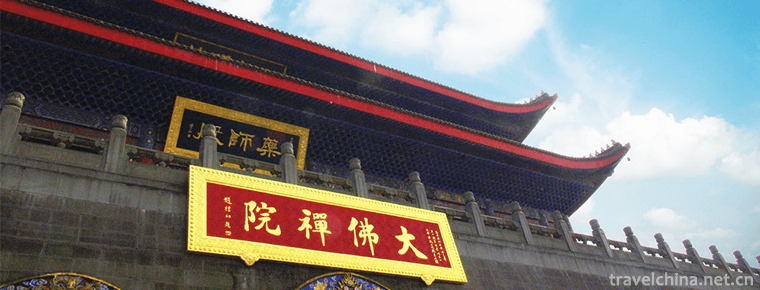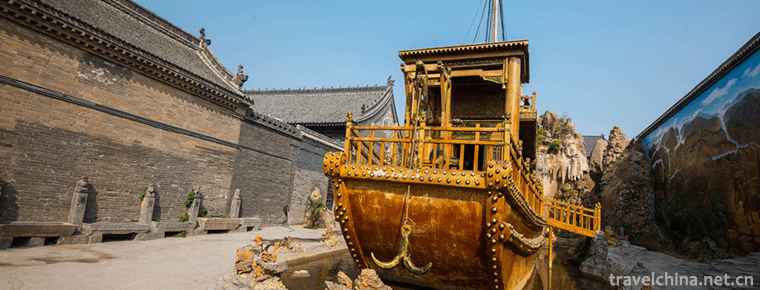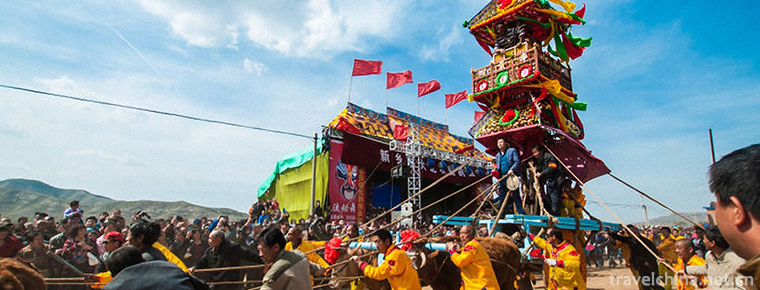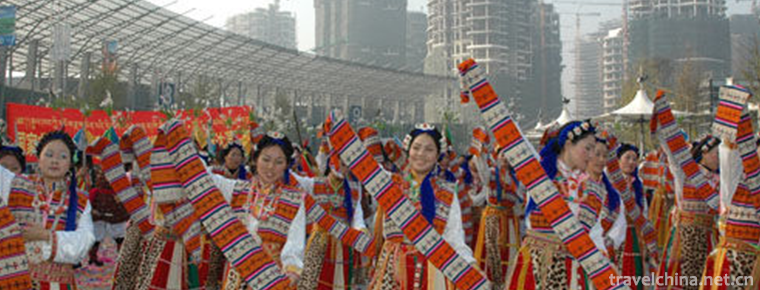Zhoushan gongs and drums
Zhoushan gongs and drums
Zhoushan gongs and drums are the representatives of traditional folk art in Zhoushan City, Zhejiang Province. They are based on gongs, drums, cymbals and clappers, with silk bamboo, magnificent sound and bold melody. The atmosphere is very warm, with distinctive island characteristics. After liberation, this folk art slowly moved onto the stage through processing and improvement. The main works are: Fishing Boat Hymn, East China Sea Fishing Song, Fishermen's Joy, etc.
On May 20, 2006, Zhoushan gongs and drums were listed in the first batch of national intangible cultural heritage list with the approval of the State Council.
Brief introduction
Zhoushan City is located in the northeast of Zhejiang Province, east of Hangzhou Bay and south of Yangtze Estuary. Its abundant marine resources are the basis of local people's production and life. Specific production methods and living customs breed unique folk arts, among which Zhoushan gongs and drums are the representatives. The gongs and drums in Zhoushan are based on gongs, drums, cymbals and locks, with silk and bamboo as the keynote. The sound is magnificent, the melody is swift and unrestrained, the atmosphere is very warm, and the island features are distinct. After liberation, this folk art slowly moved onto the stage through processing and improvement. The main works are: Fishing Boat Hymn, East China Sea Fishing Song, Fishermen's Joy, etc.
historical origin
As early as the Ming and Qing Dynasties, it was widely circulated in Dinghai. Legend has it that it originated in navigation. It was used by ships to attract customers at wharfs. It was used to relieve the stillness during navigation and to convey information in fog. After the big family from the family marriage celebration, birthday to make a living, the new ship into the sea, relocation of new residences, opening business, also need to invite a group of drummers to play.
The old gongs and drums in Zhoushan mostly appeared in the red and white wedding, temple fair celebration and fishermen's sacrifice to the sea and other activities in folk villages. After 1949, this folk music form was officially named "Zhoushan Gong and drum" with the participation and arrangement of professional musicians. At the World Youth Festival held in Moscow in 1957, Zhoushan gongs and drums won the gold medal of the World National Music Competition.
Because of the regional characteristics, "Zhoushan gongs and drums" show the bold and rough fighting and the magnificent and dangerous scenes of the fishermen in the East China Sea, as well as the festival atmosphere of joy and warmth such as sailing and ocean gathering.
The old "Zhoushan gongs and drums" were mostly used to attend meetings. "Taiping gongs", "ship-shaped gongs and drums" and "Sanfan gongs and drums" appeared successively. Especially in the 1950s after the founding of the People's Republic, with the participation and arrangement of professional musicians, the folk "Zhoushan Gong and drum" was adapted into a large-scale percussion "sea Gong and drum"
In the 1960s, "Zhoushan Gong and drum" became very popular. Many professional literary and artistic groups, such as the Chinese Art Troupe and the Central National Orchestra, came to Zhoushan to learn to play "Zhoushan Gong and drum". Some groups also regarded "Zhoushan Gong and drum" as a key performance for overseas performances and peacetime performances, such as "Yuzhou" performed by the Chinese Art Troupe in the United States in 1976. "Kaige" and so on are well received by audiences at home and abroad.
In the 21st century, "Zhoushan Gong and drum" is a wonderful folk flower in the island. Works created in the form of "Zhoushan gongs and drums" have won prizes in various competitions at the national and provincial levels for many times. Especially in 2002, the pure percussion ensemble "Boiling Fishing Capital" won the praise of experts and audiences for its warm and explosive atmosphere, rich and changeable performance, and won the double gold medal of creation and performance in the first folk Gong and drum competition in Zhejiang Province. He was also invited to attend the 2003 New Year's Festival in Zhejiang Province. This song not only retained the essence of the gong and drum of "Zhoushan Gong and drum", but also added many new elements, which made people feel magnificent and exciting. It is one of the more successful works of "Zhoushan drum and drum" adaptation.
With the vigorous development of mass cultural activities and the attention and support of local government to folk traditional literature and art, "Zhoushan Gong and drum" has also developed rapidly among the people. Not only Shenjiamen, where the district government is located, has a well-trained and well-equipped "Zhoushan Gong and drum" team, but also several "Zhoushan Gong and drum" teams with local characteristics are active in the island fishing villages, such as the "Women Zhoushan Gong and drum team" of Xiushi Island. With their warm, cheerful and passionate performances, they have added a hot and festive atmosphere to the festival celebrations, literary and artistic performances and other cultural activities, which are welcomed by the masses.
In August 2003, Putuo District held an unprecedented scale of the first China Shenjiamen Fishing Port Folk Customs Congress. "Zhoushan Gong and drum" as one of the most distinctive and expressive folk traditional literary and artistic projects in the local area, made a splendid demonstration in the street cruise and literary and artistic performances of folk conventions, and was praised by the audiences from all over the country.
However, after the 1960s and 1970s, due to the development of market economy and the diversification of forms of cultural entertainment, Zhoushan gongs and drums, as a regional cultural expression, gradually marginalized. With the successive death of old artists and the abandonment of a number of artistic successors from then on, the gongs and drums in Zhoushan have become green and yellow, and need to be protected urgently.
The state attaches great importance to the protection of intangible cultural heritage. On May 20, 2006, Zhoushan gongs and drums were listed in the first batch of national intangible cultural heritage list approved by the State Council.
artistic characteristics
"Zhoushan Gong and drum" is a set of multi-stage playing music. The Orchestra plays, pulls, plays and plays all kinds of musical instruments with complete preparation. The two main musical instruments - drums and gongs are unique and novel. Their playing style is unique. Their music and volume are contrasted distinctly, and their acoustics are rich in color. They have the functions of expressing various interests.
Zhoushan gongs and drums are well-prepared. The two main musical instruments are composed of 13 gongs and five drums. Their playing style is unique, the volume contrast is distinct, and the sound color is rich.
The representative traditional repertoires of Zhoushan gongs and drums are Zhoushan gongs and drums, Baxian Preface, Yujiale, Sand Tune, Chaoyin, etc. They are all compiled into Zhejiang Volume of Chinese Ethnic and Folk Instrumental Music, and many repertoires are recorded.
Representative Works
There are: Fishing Boat Song, East China Sea Fishing Song, Fishermen's Joy, Sand Melody, Chao Yin, etc.
Inheritance Significance
Because of its regional characteristics, Zhoushan gongs and drums show the bold and rough fighting and the magnificent and dangerous scenes of the fishermen in the East China Sea, as well as the festival atmosphere of joy and warmth such as sailing and gathering the ocean.
Most of the old gongs and drums in Zhoushan were used to attend meetings. Folk activities such as Pavilion raising, sea sacrifice, ocean gathering, celebration and so on. At that time, gongs and drums were simple and single in form. Later, they were gradually enriched and developed in their contacts with foreign folk culture and art. From simplicity to complexity, from rigidity to dexterity, Taiping gong, ship-shaped Gong and drum, and triple Gong and drum appeared successively. Especially in the 1950s after the founding of the People's Republic of China, with the participation and arrangement of professional musicians, Zhoushan gongs and drums were adapted into a large-scale "sea gongs and drums" playing music, and won the Gold Prize in the folk music competition of the 7th Youth Festival held in Moscow in 1957, which made Zhoushan gongs and drums go to the world.

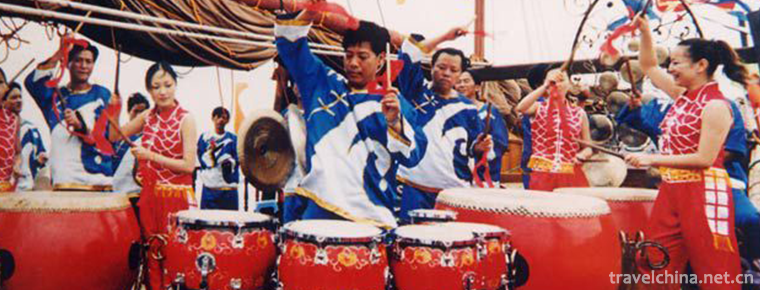
-
Mount Huangshan
Huangshan: World Cultural and Natural Heritage, World Geopark, National AAAAA Class Scenic Spot, National Scenic Spot, National Civilized Scenic Spot Demonstration Site, Top Ten Famous Mountains....
Views: 235 Time 2018-10-28 -
Hometown of Zhu De
Zhude Hometown Scenic Spot: National AAAAA Tourist Scenic Spot, National Key Cultural Relics Protection Units, National Patriotic Education Demonstration Base, National Anti-corruption Education Base,.
Views: 267 Time 2018-12-12 -
Buddhist Cultural Tourist Area of Great Buddha and Zen Temple
As the first door to worship Mount Emei, the Buddha Zen Temple is the first stop to pray and worship in Emei, and it is also a must-go place. The Grand Buddha Temple, formerly known as the Grand Buddh.
Views: 157 Time 2019-01-06 -
kangbaiwan manor
Kang Million Manor, also known as Heluo Kangjia, is located in Kangdian Town, Gongyi City, Henan Province (formerly Gongxian County). It was built in the late Ming and early Qing Dynasties.
Views: 192 Time 2019-01-29 -
Longlishi Sea Scenic Area
Located in Shilin Town, Wansheng District, Chongqing, Longlishi Sea Scenic Area is a karst geological park type natural scenic tourist area with a planned area of 4.7 square kilometers and a distance .
Views: 229 Time 2019-02-06 -
Four Scenic Car Race
Duyuan Sijing Car Race is a folk activity in Pingshun County, Shanxi Province. In May 2011, Pingshun County, Shanxi Province declared the "Four Scenic Car Race .
Views: 349 Time 2019-04-28 -
River chant
River chant is a traditional folk song spread in the Yellow River and the Yangtze River valley. In ancient times, when people were fighting with nature, they shouted; when harvesting.
Views: 105 Time 2019-05-05 -
Castawin Dance
Castawin Dance, a traditional dance in Heishui County, Sichuan Province, is one of the national intangible cultural heritage..
Views: 191 Time 2019-05-08 -
Shangdang Erhuang
Pihuangqiang in Shangdang area is called Shangdang Erhuang. It is an independent opera with a history of more than 200 years. Locals call it "Tu Erhuang". At present, Shangdang Erhuang is on.
Views: 177 Time 2019-06-13 -
Hu Bilie Kublai Khan
Kublai was from 1215 to 1294, namely, Yuan Shi Zu, Mongolian, statesman and strategist. regent Torre Fourth sons, Yuan Xian Zong Mongo Brother. Yeke Mongghol Ulus The last generation of Khan, also at .
Views: 146 Time 2019-09-07 -
China University Of Geosciences
China University of Geosciences is known as "Da Da". Ministry of Education of the People's Republic of China Directly under National Key Universities It's the state. 211 Project ",".
Views: 178 Time 2019-12-08 -
Topography and geomorphology of Luzhou
Luzhou city is a typical mountainous city with 56.14% of the total land area. It is mainly composed of high mountains (500-1000 meters above sea level) and middle mountain (1000-1902 meters above sea level). Taking the middle Yangtze River Valley as the lowest center, it gradually .
Views: 309 Time 2020-12-14
